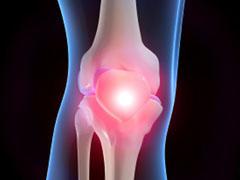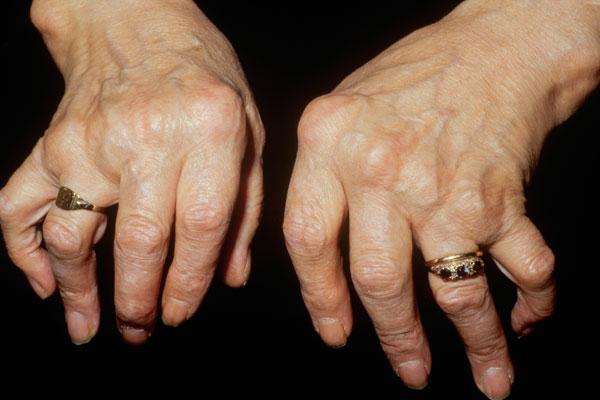There continues to be expanding applications for the use of 3D printing within the medical community. Researchers, led by Dr. Rocky S. Tuan, have discovered a new method of 3D printing which can reconstruct a  patient’s cartilage, layer by layer, in nearly any shape that is desired.
patient’s cartilage, layer by layer, in nearly any shape that is desired.
Tens of millions of individuals around the world suffer from the most common form of arthritis, osteoarthritis. In fact 27 million people in the United states suffer from the disease as I write this. Osteoarthritis occurs as joints age. The wear and tear of common movement can degrade the joints, leading to a loss of cartilage. Cartilage is a flexible tissue which provides padding where bones come together. The loss of cartilage means that bones begin rubbing together, and the friction can oftentimes lead to excruciating pain during certain movements. Traditional treatments involve drugs to block the pain, as well as difficult joint replacement surgeries.
“Osteoarthritis has a severe impact on quality of life, and there is an urgent need to understand the origin of the disease and develop effective treatments” said Rocky Tuan,
Ph.D., director of the Center for Cellular and Molecular Engineering at the University of Pittsburgh School of Medicine. “We hope that the methods we’re developing will really make a difference, both in the study of the disease and, ultimately, in treatments for people with cartilage degeneration or joint injuries.”
Tuan and his team have been working to 3D print patients’ own stem cells in order to form pieces of human cartilage. The stem cells are mixed with a substance which can retain its form once extruded from the printer, and also provide a sort of biological fertilizer to help those cells grow.
“We essentially speed up the development process by giving the cells everything they need, while creating a scaffold to give the tissue the exact shape and structure that we want,” said Tuan.
The ultimate goal, which the researchers are working towards, is to be able to print the cartilage stem cells directly into a patient, where needed, using a catheter. For instance, if a patient has cartilage loss around their knee, surgeons could print a stem cell mixture into that persons leg, which will gradually grow into replacement cartilage. In addition to relieving the agony that people with Osteoarthritis go through on a daily basis, the technology could also be put to use for soldiers injured on the battlefield, or victims of accidents. Unlike the other 3D cartilage printing research being done around the globe, this method uses only visible light during the process, while others use UV light, which can often times destroy the cells being printed.
Tuan’s team will next merge their 3D printing technique with their nanofiber spinning technique developed previously. In doing so, they hope to create an even more precise cartilage, which is comparable to that produced naturally by the human body. Tuan and his team hope that this technology will lead to a cure for those suffering from this painful joint disease. Participate in the discussion around this new 3D cartilage printing technology at the thread on 3DPB.com.
Subscribe to Our Email Newsletter
Stay up-to-date on all the latest news from the 3D printing industry and receive information and offers from third party vendors.
You May Also Like
US Army Corps of Engineers Taps Lincoln Electric & Eaton for Largest 3D Printed US Civil Works Part
The Soo Locks sit on the US-Canadian border, enabling maritime travel between Lake Superior and Lake Huron, from which ships can reach the rest of the Great Lakes. Crafts carrying...
Construction 3D Printing CEO Reflects on Being Female in Construction
Natalie Wadley, CEO of ChangeMaker3D, could hear the words of her daughter sitting next to her resounding in her head. “Mum, MUM, you’ve won!” Wadley had just won the prestigious...
Blue Laser-powered M600 3D Printer Launched by Meltio
Founded in 2019 as a joint venture between Additec and Sicnova, metal 3D printer OEM Meltio develops and manufactures high-performance and easy-to-use metal 3D printing solutions that use its patented wire-laser metal...
3D Printed Storage Tanks Cut Material Costs by 25%
In a previous article, “Concrete Dreams: Let’s Print Money, Not Houses,” we discussed how the spotlight on 3D printing homes might be misplaced. Bollards, pedestrian bridges, and concrete tanks could...































